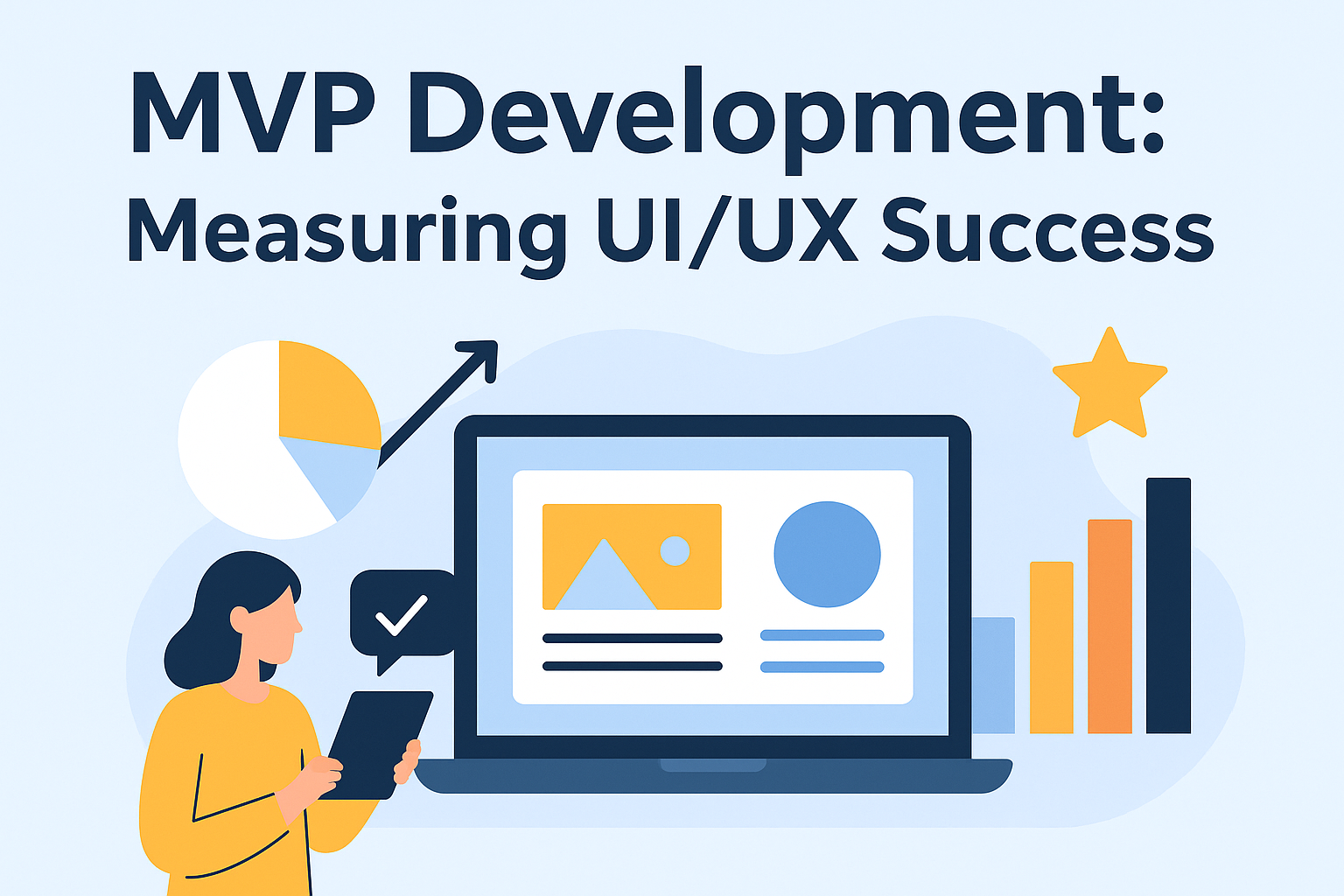MVP Center: Driving Innovation in Mobile App Development

As companies engage in MVP development, they usually pay a lot of attention to creating functionality and ignore one of the most critical aspects of success: the UI/UX design. MVP is not simply a matter of releasing once you have basic functionality; it creates a complete and smooth user experience that showcases your product concept. Even the most technically sound MVP can never attract or retain users without proper design.
This blog discusses the metrics for measuring the success of UI/UX design in MVP development, the most critical metrics, and best practices for ensuring that people like your product.
Why UI/UX Matters in MVP Development
MVP development aims to test your business idea on actual users using the simplest form of your product. Although speed and cost-efficiency are needed, the design should not be compromised. A friendly, easy-to-navigate interface generates trust, less friction, and invites interaction. Design is the interface between your product’s functionality and user satisfaction.
If your MVP is poorly navigated, has unclear layouts, or has unattractive images, people might not use it until you can collect meaningful feedback. This is why early UI/UX performance measurement can be used to detect design weaknesses before they are scaled to a full product.
Key Metrics for Measuring UI/UX Success
You must use quantifiable information to measure how well your UI/UX accomplishes its objectives. The most significant measurements to monitor during the development of MVP are listed below:
User Engagement
Engagement measures the level of interaction users have with your product. The number of active users each day, the length of the session, and the number of times users log in indicate the value users see in your MVP. When people show a lot of engagement, your design will be used again.
Task Success Rate
It quantifies the user’s ease or difficulty performing the desired task, such as registering, ordering, or navigating to critical functionality. A high task success rate indicates your design is user-friendly and consistent with the user’s expectations.
Error Rate
When users persistently make errors in carrying out tasks, the design lacks clarity. Tracking errors determines areas of problem in your UI, like ambiguous buttons, confusing labels, or complicated workflows.
Time on Task
Time spent by the users on a task. Although shorter periods signify efficiency, they can be too short, indicating that users are missing vital steps. The equilibrium is in the flows of intuition, allowing users to perform their tasks with haste without disorientation.
Customer Satisfaction (CSAT) & Net Promoter Score (NPS)
User feedback is priceless when developing an MVP. CSAT surveys and NPS can assist you in determining user satisfaction and loyalty. A high NPS is also a sign that the users are satisfied and ready to recommend your MVP to other people.
Retention Rate
An excellent UI/UX retains users. The number of users returning to your MVP after the initial time can be used to determine whether it is sustainable. Lack of retention can point out usability problems that should be resolved.
Conversion Rate
Lastly, your MVP should strive to motivate people to reach a goal. This could be subscribing to a newsletter, buying a product, or scheduling a demo. A high conversion rate clearly indicates that your design can support business purposes.
Best Practices for UI/UX in MVP Development
Metrics can give clues, but adhering to well-known design practices is essential to ensure success. The following are some of the best practices that you can use during your MVP development process:
Take a User-Centred Design Approach
Begin with research to learn the needs and behaviors of your target audience and their pain points. Prepare wireframes and prototypes based on the real user expectations, not the expectations.
Priorities Simplicity
MVP is all about basics, so maintain a clean and uncluttered design. Each component on the interface needs to be useful. Offering too many features to the users can dilute the value proposition.
Concentrate on Mobile Responsiveness
Mobile usage is taking over, so ensure your MVP is compatible across devices. Responsive design makes them more accessible and enhances retention levels.
Perform Usability Testing at an Early Stage
Before launching, you should test your MVP with a limited number of actual users. The interactions will reveal the design flaws you may not detect internally. By reiterating this feedback, a more streamlined user experience is guaranteed.
Leverage Analytics Tools
Add analytics tools like Google Analytics, Hotjar, or Mixpanel to track engagement, session recordings, and heatmaps. These tools provide information about user behavior that can potentially inform design.
Iterate Based on Feedback
The development of the MVP is a continuous process. Based on the knowledge obtained in metrics and user testing, you can improve your UI/UX. Minor, frequent steps can bring about significant long-term outcomes.
Final Thoughts
UI/UX design does not appear as a superficial coating on your MVP because it is a factor that will make or break your product. Businesses can guarantee that the MVP development process brings actual value to users by applying the best practices and using the right metrics to measure success.
The final aim of any MVP is to validate an idea, although the goal is only achieved when the user finds the product usable, enjoyable, and worth returning to. By prioritizing the success of the UI/UX, you always ensure that your MVP is more than a mere existence because it becomes a living entity.
Connect with MVP Center
Ready to take the first step towards unlocking opportunities, realizing goals, and embracing innovation? We're here and eager to connect.




